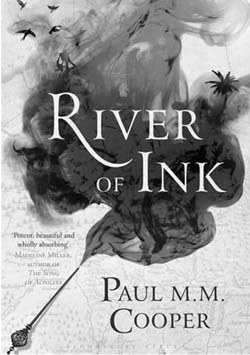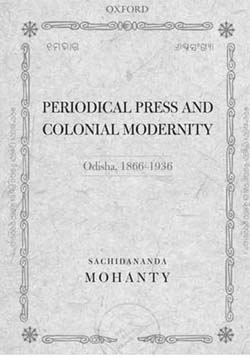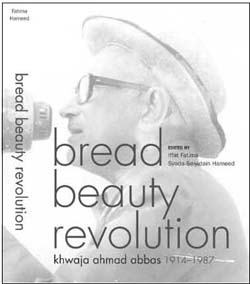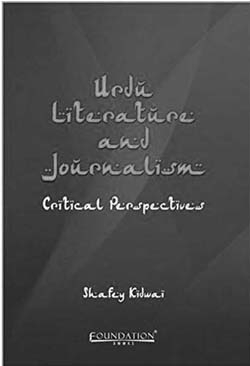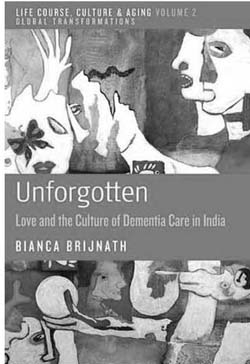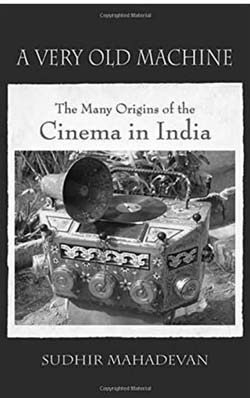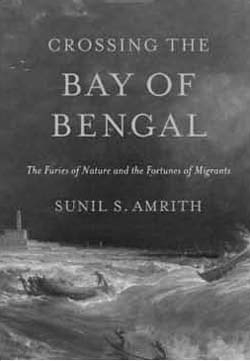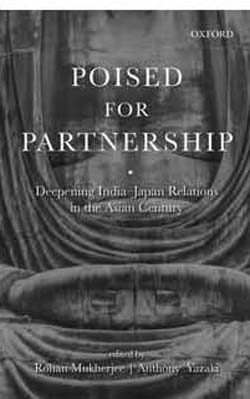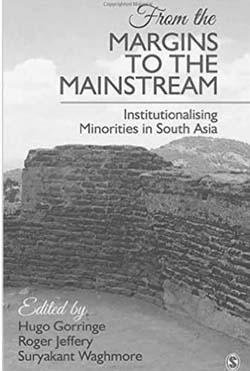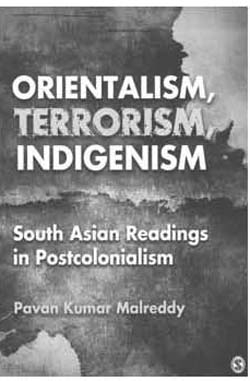Eighteen: The End of Innocence is a book dedicated to coming of age. Those sensitive teenage years which oscillate between childhood and adulthood are often beset with physical, mental and social worries. Books dealing with this time of life could be both a guide and friend. Yet there has been a regrettable gap in our literature for the young adult. This vacuum is recently being filled with novels on adolescent years and college life by a host of upcoming young authors.
Archives
June 2016 . VOLUME 40, NUMBER 6The three books under review here, all belonging to the Environment and Nature category, cover India’s many protected areas. India has designated its protected wildlife areas as National Parks, Wildlife Sanctuaries, Bird Sanctuaries and Tiger Reserves. Besides this, there are areas that are designated as Important Bird Areas. Similarly, the country’s Western Ghats and the North East are declared global biodiversity hotspots.
Book reviews often depend on the affinity of the reviewer. The complex text of Indian femininity and feminism is not an easy phenomenon to be codified by any language of art and the art of the written word is no exception. R.K. Biswas’s Breasts and Other Afflictions of Women is a sensational draw for sure. Will it be Indian English’s answer to Eva Ensler’s Vagina Monologues? was the first question to come to my mind.
The eponymous story in this collection—a minor galaxy, to further the metaphor the title introduces—traces an encounter with the last speaker of a language, an elderly ailing woman in an unnamed location. All we can glean is that she is remote—geographically, culturally, and, of course, linguistically—from the team of young researchers who appear with their machines to record that which is inherently impossible—‘speech’ in a language of which she is the last remaining speaker.
2016
Paul Cooper is audacious in not only situating his debut novel in as unlikely a setting as medieval Sri Lanka but in constructing it around an ancient Sanskrit poem. His daring choice of context, however, adds to the lustre of the book. River of Ink is a work of abundant creative ability: an adroitly-crafted love story, a morality tale about poetry’s triumph over oppression.
If I recall right, Keki Daruwalla, a noted poet and writer of short stories, first ventured into the jungle of novels relatively late in life, in 2009, with an intriguing book titled For Pepper and Christ. I am not sure if the book did well in sales. I rather think it did not, although it had much to commend it. The problem was with the way it had been structured. His second novel, Ancestral Affairs, should do better.
Lengthening Shadows, an anthology of short stories in the Portuguese-language from Goa, a former Portuguese colony, which covers a period of more than a century, from 1860 to 1980, was edited and translated into the English language by Paul Melo e Castro, an English scholar on Goan literature based at Leeds University. With the exception of ‘The Africa Boat’ by Laxmanrao Sardessai, the stories in this collection were painstakingly compiled by Melo e Castro from Goan newspapers, the Bulletin from the Institute Menezes Bragança (IMB), and private libraries. Therefore, while they are a novelty for the lay reader, they are a real treasure for literary scholars.
2015
Hailed as a landmark literary work, a milestone in the literary history of Gujarat, Sarasvatichandra, Govardhanram Tripathi’s magnum opus is now available in English translation (coincidentally, all the four parts of the novel have been translated into Hindi at this juncture), after 128 years of its publication in Gujarati. It is but natural for the discerning reader to wonder why it was not translated for these many years.
Reading Island of Lost Shadows takes one compulsively back to Joseph Conrad’s Heart of Darkness. A century and a half after the publication of Conrad’s masterpiece, here is another novel, set in Kerala, a continent away from Conrad’s Africa, that probes the ability of power to corrode the human soul. A boat journey across a river, a headless trunk of a pig washed down the stream, the mysterious figure of Karadi Papa (more a myth than a man), the impaled head on the gates of the Meledathu tharavadu, the tribal Paniyas with their chants, songs, and rituals—all bring to mind a Conradian world of darkness, mystery and, more than anything else, horror.
Odisha and Odiya language faced a crisis in the second half of the nineteenth century. Institutions and dispositions introduced by colonial modernity had produced a crisis of survival and autonomy before the Odiya speaking gentry. The new system of education, style of governance, use of technology, maritime trade, new revenue regulations, modern science and healthcare practices, and even food and other articles of consumption and new forms of entertainment, had unsettled a traditional social order. The Odiya literati responded to this crisis in several ways.
Khwaja Ahmed Abbas donned many hats in his lifetime which includes writing poetry, short stories, novels and making films. For the uninitiated, K.A. Abbas was an active member of PWA and one of the founding members of IPTA. With the corpus of 74 books, 40 films, 89 short stories and 3,000 or so from his column writings, Abbas Sahab’s writings constitute a treasure-trove of information on the evolution of the idea of India. At the time of writing one of his last columns for the Blitz, Abbas Sahab makes an important observation about the then budding journalist P. Sainath—the proof of his astute reading of the media in general and politics in particular.
Shafey Kidwai’s book is true to its title and it delivers what it promises. The chapters in this book may have been written over a long period of time but probably the book was waiting for a time when the distinction between literature and nonliterature (read journalism) is not so sharp. A different context would make earlier journalistic writings appear as literature. How do we read the essays of Addison, Matthew Arnold or Sir Syed Ahmad Khan today if not as literature? The two components of the book, literature and journalism, are defined by their textuality, a major point of debate in critical theory today.
Let me introduce the book to the readers with an anecdote concerning the subject matter of the book. I joined as a medical undergraduate student at the Delhi’s University College of Medical Sciences (UCMS) in 1986, which by that time had shifted just adjacent to Shahdara in eastern Delhi, within the newly constructed campus of Guru Teg Bahadur Hospital (GTB). Having passed through the humdrum of Shahdara or other crowded and maddeningly chaotic localities of East Delhi to reach the GTB campus, its spacious locale and high rise buildings of the campus were bound to make an impression on any visitor.
Unforgotten is the product of Bianca Brijnath’s doctoral research at Monash University. It can be considered as a significant contribution to anthropological literature on ageing, dementia and its care in India. Though her research is limited to urban middle class (which she acknowledges as a limitation), it is truly revealing in terms of the confined participants and their lived experience with dementia and sevâ. Sevâ a concept which Brijnath explores in all its forms and layers as care work is shaped in everyday family life centred on cooking, feeding and eating; in doctor shopping and looking for an ilâj or cure; and bearing the attended expenses.
The picture on the cover of Sudhir Mahadevan’s book is a Bioscope; a techno-material ‘assemblage’ that he will argue is emblematic of film cultures in India. Writes Mahedevan: The Bioscope is the combination of the past and the present. It represents the key symbol of early cinema brushing against new and not so new media. It is the refashioning of an ‘optical device’ of still pictures predating the cinema in the 19th Century, into a source of moving images with the help of home viewing technology and digital formats.
As stated by Kapila Vatsyayan, Chairperson, IIC Asia Project in her Foreword, the book is the author’s ‘personal voyage or certainly a journey of exploring and identifying the many levels of communications between India and countries of South East Asia over a long period of history.’ The journey has been lucidly captured in the text that illustrates the large number of colour visuals in the book. Many of these have been sourced from museums in countries of South East Asia during the author’s long sojourns in the region.
This is a book by arguably one of the best historians of migration of today. It definitely lives up to the fact that it won the American Historical Association’s John F. Richards Prize in South Asian History. The work is of a high scholarly nature, yet it makes you want to read it like a novel reminding one of the narrative genius of the likes of Amitav Ghosh. It is a solid history of migrations around the Bay of Bengal but can be of interest to scholars of environment, geographers and cartographers, not to say to those who are interested in the region itself.
Meera Nanda’s new book continues with her mission to critically examine the interface of science, religion and Right Wing politics in India, which is a highly significant theme today with the growing trend of saffronization of knowledge production. While in her previous works such as Breaking the Spell of Dharma and Other Essays (2002), and Prophets Facing Backward: Postmodern Critiques of Science and Hindu Nationalism (2004), she explored the theme for largely an academic readership, the book addresses the general reader.
The work under review is a collection of essays written by one of the well known historians of the Delhi Sultanate, Mohammad Habib. There are eight essays in this collection that deal with the social and cultural transformations in the Sultanate period. Some of these essays have turned out to be quite controversial, and have generated exciting controversies among historians. The essays ‘Sultan Mahmud of Ghaznin’ and ‘Chishti Mystic Records of the Sultanate Period’ have, for instance, been endlessly debated among historians, and we have still not heard the last word on the controversies that surround them.
Connectivity between India and China has always been a difficult issue. Historically, though there was flow of ideas and goods between the two sides, these connections were lost over time. With the economic rise of both India and China the debate over the benefits which border trade and connectivity can provide for further development of the region has gained momentum. To encash this India and China started border trade at Nathu La in July 2006.
It is often a matter of surprise and disappointment that two countries, namely India and Japan, well-established and vibrant democracies which have no historical baggage of any dispute, and which on the other hand are bound by Asian cultural traditions and values, and the teachings of Buddhism, still do not find themselves having a substantive relationship. Actually there are considerable complementarities in the economic field; moreover, the two share a common security concern of the rising power of the neighbour.
The process of institutionalizing radical protest politics and their demands include a swathe of dilemmas and complexities that include the possibility of de-radicalizing and blocking the political and collective sense that such politics grounds them on. Thus, radical politics on the one hand wishes to witness institutionalization and mainstreaming of their politics to redefine political landscapes, while on the other, they wish to continue as radical protest politics maintaining the fervour and the process of wedging open social narratives that had little space hitherto. It has often been witnessed that political movements that institutionalize themselves in law, policy, and formal institutions carry the anxiety of deradicalizing themselves. The protests get entangled in legal dilemmas as has happened with the sub-caste politics, where mass mobilization was replaced by technical detailing of who is or is not eligible for reservations, or as has been the case with domestic violence where with 468(a) the issue was individualized, and became a matter of accessing the judiciary,
India is endowed with a rich philosophical tradition, which dates back to ancient times, a tradition which is also varied along various axes. One of the main concerns of Bhikhu Parekh is to show the richness of this tradition from the perspective of the norms and standards of argumentation within the political and philosophical discourses. His main concern is how standards were maintained when discussion and debate went antagonistic—publicly. Parekh thinks it is worthwhile to investigate this aspect because he is of the opinion that earlier studies, particularly the work of Amartya Sen is not satisfactory enough. Although he agrees with much of Sen’s work in The Argumentative Indian, he ‘departs from him in several respects’. The word ‘argumentative’ in the book is used sometimes ‘in the sense of being methodical in one’s reasoning and weighing up arguments before reaching a conclusion’ and sometimes it seems that it is being used in the negative pejorative sense and in a ‘more common and conventional sense, it refers to someone who argues for the sake of arguing.’ Moreover, Sen does not emphasize the importance of having a tradition of ‘public debate’. Sen only focuses on ‘disagreements between two individual or schools and overlooks the equally and, in some contexts, far more important public debates conducted before large audiences, having formal structure and involving a binging verdict.’ The aim of the book partly is to introduce to the reader the methods in which this public debate took in the ‘Indian tradition’.
Pavan Kumar Malreddy’s slim volume discusses and synthesizes three concepts with concrete examples: orientalism, terrorism and indigenism (Dalit Bahujan movements), with an involved reading of academic literature as well as the popular media. He draws from the contemporary literary studies in South Asia to discourse on orientalism and contemporary manifestations of terrorism (9/11 for example). What gets highlighted in the process are contradictions inherent in the way South Asia has viewed and comprehended postcolonialism, as analysed in the Subaltern Studies and the way the West has viewed it. The book makes an attempt to position Orientalism in a postcolonial world in transition with terrorism and identity-based cleavages occupying axis-space for discussions. The use of the work of prominent literary figures from South Asia to analyse the three concepts is an innovative analytical tool in the study.




